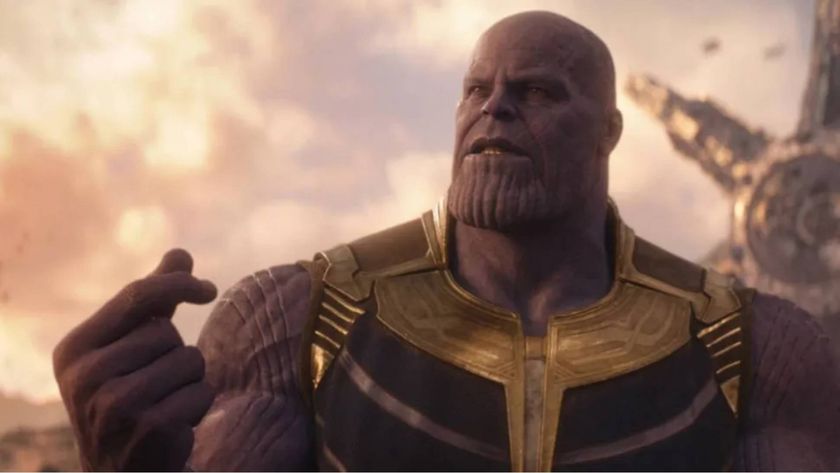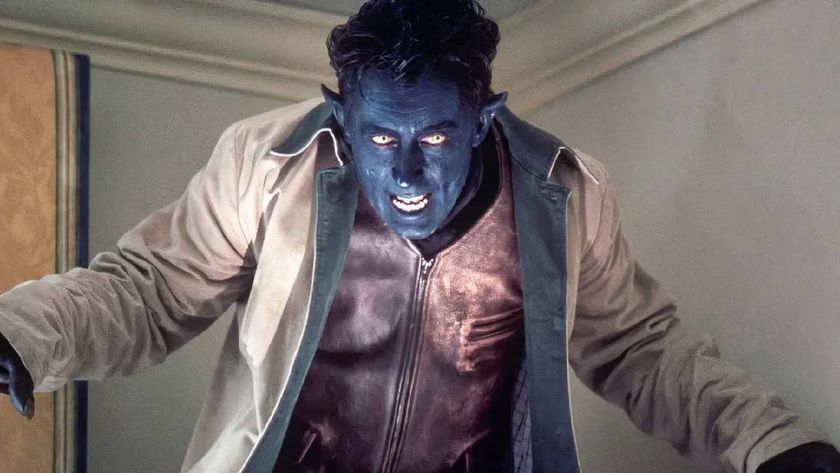Behind The Scenes Of A Dangerous Method
On set with Cronenberg and co
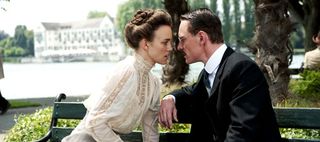
The Magic Of Movies
Fassbender. Knightley. Mortensen. Meet the red-hot cast of A Dangerous Method , David Cronenberg’s unblinking biopic of Freud, Jung and the messy birth of psychoanalysis. Warning: contains spanking…
Lake Constance, Bodensee, Austria. 21 July, 8am.
David Cronenberg sits hunch-shouldered over a monitor in baseball cap, blue jeans, trainers and zipped-up windbreaker. Twenty paces in front of him, stood beside the vast mercury lake, stands Keira Knightley, her elegant features and swan-like neck appearing quite at home in this rarefied, recreated world of horse-drawn carriages, sailboats, straw hats, waistcoats, floor-length dresses, ribbons and parasols
She gazes out across the water as Michael Fassbender, sat on the edge of a white boat with a red sail, drifts ever closer. Cronenberg’s regular DoP Peter Suschitzky closes steadily in on Knightley’s thoughtful face to capture Fassbender’s POV. Three takes and then a change of set up allows us to witness the action from Keira’s view, the camera hanging on her shoulder and holding the shot for two whole minutes as the sailboat breezes in.
“Cut,” says Cronenberg, clear and soft. Suschitzky good-naturedly grumbles, “It’s an impossible shot. Water moves, that’s the nature of it…” and a speedboat whizzes to the shore to fuss over Fassbender. Then a diver pops up, clinging to the side of the sailboat boat. Ah, the magic of movies…
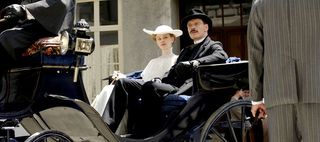
Appearances Can Be Deceptive
Appearances can, indeed, be deceptive.
Arriving on set at 7am for the penultimate day of an eight-and-a-half week shoot, Total Film ’s enjoyment of the stone promenade, plantain trees and smooth, expansive lake has already been painfully interrupted by some sort of flying spiderbug.
Looking like something out of an early Cronenberg movie, or perhaps Naked Lunch , it went straight for the neck and took a deep draught just moments after the PR’s offer of a can of insect-repellant had been politely declined.
Cronenberg, who introduces himself with a modest “Hi, I’m David, the director”, chuckles at the anecdote. He, more than most, knows of the chaos and ugliness that seethe beneath composed surfaces – just look at the coolly lensed Cras h or the fake family-man existence lived by Viggo Mortensen’s savage protagonist in A History Of Violence .
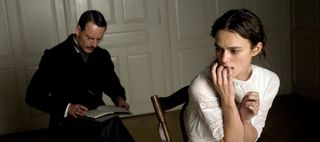
Strange But Familiar
The director’s new film, A Dangerous Method , occupies territory seemingly strange but actually familiar.
Set at the beginning of the 20th century, it’s the based-on-truth tale of the birth of psychoanalysis, featuring Sigmund Freud (Mortensen), Carl Jung (Fassbender) and Sabina Spielrein (Knightley), the hysterical Russian patient who came between these friends and thinkers.
Cronenberg making a talky, erudite costume drama? Forgetting M. Butterfly (most people do), it sounds like a departure, or at least a step still further away from his early, icky work after a run of increasingly mainstream pictures.
“I have to remind people that the first film I ever made was called Transfer [ 1966 ] and it’s about a psychiatrist and his patient, a seven-minute film,” says Cronenberg, taking off his specs and replacing them with foldaway Ray-Bans as the sun breaks out. The lake sparkles. “The movies I have done are totally irrelevant to me – I don’t worry about a connection because I’m making the movie and it will be there.”
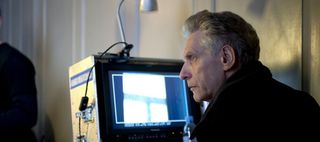
The Reality Of The Human Body
Cronenberg continues: “But you could say, well, Freud insisted on the reality of the human body at a time when people didn’t want to know about the body and covered it up with many layers of clothes.
“Freud talked about penises and vaginas and anuses and excrement and child abuse and incest. That connects this movie to my other movies. But also, in a way, psychoanalysts are like the group in Crash .
“People at the time viewed them as some weird Jewish cult and felt they were a subversive group living in the very structured society of the Austro-Hungarian Empire.”
Not interested in shooting his period psychodrama the Merchant Ivory way, with gleaming photography prettifying the past and placing a pane of glass between characters and viewers, Cronenberg shot with short and wide-angled lenses to place the audience close to his actors.
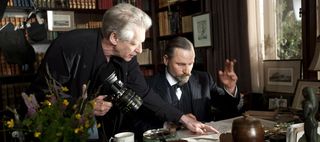
Submerged In Time
Cronenberg wants to “submerge us into that time” and Mortensen, working with Cronenberg for the third time, feels it’s essential to keep it real. He doesn’t want to impersonate Freud; he wants to inhabit him.
“I read and reread,” Mortensen smiles, leaning back expansively and crossing his long legs. “I read his writing and what has been written about him, descriptions of him physically, of his conversational style, his sense of humour, what he was as a family person, his sociability, his appetite for life.
“David and I shared hundreds of email exchanges, 20 emails just about his cigars! I like to pile hundreds of things on the table before me and then select just one or two to take on the shoot. Mostly it’s in your head and becomes a sensibility.”

Jung Man
A Cronenberg virgin, Michael Fassbender came to A Dangerous Method just two weeks after completing Jane Eyr e , though, just like Mortensen, he put in months of research.
Wading through Jung’s religious upbringing, his ascent from a lack of wealth and his ever-evolving theories, the actor was startled by his findings. But first there’s a pressing matter to clear up…
“It’s my own!” he assures Total Film in a thick Irish brogue, stroking and plucking by way of proof. Sat in his trailer sporting a pinstriped suit, gold watch chain and shit-eating grin, he’ s talking about the magnificent moustache that dominates his face.
“I try to grow my own facial hair whenever I can, though it’s not my own colour,” he admits. “I actually sport a ginger moustache, so I had it coloured black.”
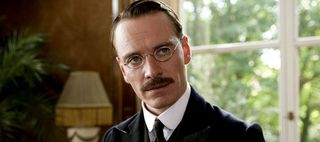
Forward Thinking
“That cleared up, it’s on to Jung. “I think he was far more forward thinking than Freud, far more fluid,” says Fassbender. “Freud, I think, brought a lot of his own neuroses into other people’s lives. Jung was very modern in his thinking, and he didn’t have any set ideas.
“Freud was staid, whereas Jung explored astrology and dealt with the spiritual world and was more interested in theology. To Freud, this was hocus-pocus, sure to bring their work into disrepute. But with Jung, nothing was closed off and no areas deemed ridiculous.”
Initially great friends who traded academic letters and ideas with a boyish enthusiasm, Freud and Jung diverged – intellectually, ideologically, emotionally – with the arrival of Sabina. It’s this parting of ways that Oscar-winning scribe Christopher Hampton’s screenplay (based on his own stage play A Talking Cure , which itself began life as an unoptioned screenplay) traces.
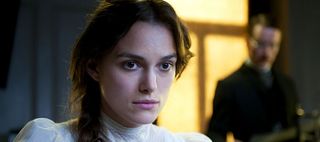
Hysteria
As portrayed by Knightley, Sabina’s hysteria manifests itself in a flurry of tics, chin-juts and a burning desire to be bent over Jung’s knee and paddled until she’s blushing at both ends.
“I said yes to David before I even knew what the fuck it was,” says Knightley, cradling a large mug of tea. “Then I read it and I did kind of go, ‘Actually, I don’t know if I can do these two scenes of S&M.’ Particularly in the internet age.
“I phoned David up and said, ‘Look, I love your work but I’m going to have to turn it down as I can’t put myself through that’. And he said, ‘OK, we’ll take them out because I want you.’ Then we started talking about it…” She smiles, sips.
“Those scenes were incredibly important and the way David saw it, they were not sexy spanking scenes but something clinical and brutal…”
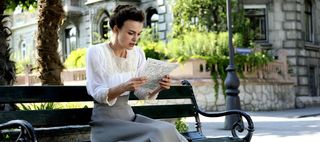
Clinical Study
“Clinical,” Cronenberg nods assertively. He’s filming Sabina stepping into a handsome cab drawn by a pair of imperious steeds. “That’s one of the reasons I had Keira looking in a mirror whilst she’s being spanked, because they did look at themselves, studied themselves so that they could understand.
“Even sex was something they watched and recorded as scientists observing a specimen.”
So is sex the best way to promote the movie? Or is better to flog the star names and the Oscar buzz? After all, in this age of Bay ’bots and superheroes, an intelligent, articulate film about big-brained men of science locking beards is not the easiest sell.
“We’ll sell all of those elements!” chuckles producer Jeremy Thomas, who first met Cronenberg in 1981 and worked with him on Naked Lunch and Crash . “But principally it’s going to be a magnificent film, a cracker. It’s a thinking man’s action movie…”
Now 3pm, the lake has turned from grey to emerald and the horses are once more being ushered into position ready to clop around the corner to the waiting Sabina. Thomas chortles at his quip and whispers, excitedly, “Yes, it’s an action movie – an action movie of words. And it’s only 90 minutes!”
And then, as if on cue, Cronenberg raises his head. “Action!” he calls, and the year’s talkiest blockbuster gets another (stately) set-piece in the can.
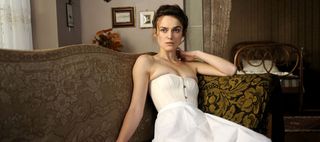
Keira Knightley Q & A
On Cronenberg, Oscars and playing Anna Karenina
Was it a dream of yours to work with David Cronenberg?
“He’s fucking extraordinary. So yes, I was excited! I actually met him about six years ago just for a general meeting in LA. We had a cup of tea and it was really nice, but nothing came out of it. And then all of a sudden, he phoned up last year and went, “I want you to play this part…”
How did you decide at which level to pitch your performance as Sabina?
“Well, it’s a tricky thing dealing with hysteria. Depression is often easier to depict on film because it’s internalised and that works very well on camera. This is absolutely the opposite, you know? A hysteric is high energy, all over the place, right out there. I read Sabina’s diaries and she described herself as like a dog or a demon. It’s such a fucking horrendous way to see yourself. I sat in front of the mirror and pulled faces at myself, going for that demonic, animalistic thing.”
You’re getting some Oscar buzz for your performance. What do you recall of your previous nomination?
“I was 20 when I was nominated for Pride And Prejudice . It was very odd. I was on night shoots on Pirates when I got the call. I remember literally going, “Oh yeah, that’s great” and turning over and going back to sleep because I was exhausted. I was working the whole time on Pirates and I literally just flew in to go to the show. It didn’t really sink in.”
How is Anna Karenina going?
“It’s going [ laughs ]. It’s definitely going! We’ve all got colds at the moment, so it’s nice and snotty on set. It’s a very stylised and very theatrical film. Hopefully it will be good.”
Is it daunting playing such an iconic literary character?
“It’s daunting because she’s hard to get a handle on. You kind of get a sense that Tolstoy loves her and hates her and judges her and is her. I read the book when I was a teenager and I loved it. I read it again over the summer – I remembered it just as a romance and this time I was like, ‘Wow, she really hates herself sometimes...’”
Finally: what did you think of the fourth Pirates movie?
“I haven’t seen it. I haven’t seen the third one either! I have a lot of Pirates to catch up on. Well, I lived it actually, so I’m alright…”
This feature originally appeared in Total Film magazine Issue 189. To subscribe, click here .
Jamie Graham is the Editor-at-Large of Total Film magazine. You'll likely find them around these parts reviewing the biggest films on the planet and speaking to some of the biggest stars in the business – that's just what Jamie does. Jamie has also written for outlets like SFX and the Sunday Times Culture, and appeared on podcasts exploring the wondrous worlds of occult and horror.
